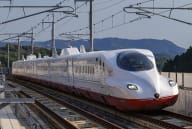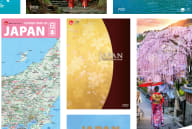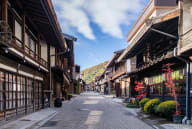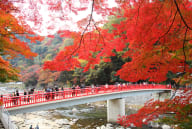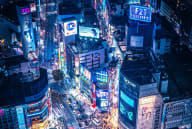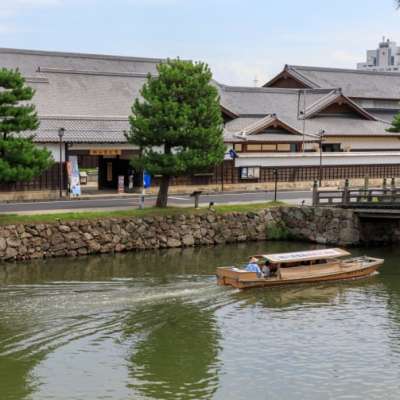
Shimane Taste the rich culinary heritage of a sacred site
A Culinary Journey in Shimane
Nestled along the western coast of Japan's main island, Shimane Prefecture offers a serene retreat into Japan's rich cultural and natural heritage. Blessed with a temperate climate influenced by the Sea of Japan and stunning mountain ranges, Shimane enjoys distinct seasons that shape its diverse agricultural and culinary landscape.
Shimane is celebrated for its abundant agricultural produce, forestry products, and seafood. The fertile plains and rolling hills produce a variety of crops, including rice, vegetables, and fruits such as grapes and melons, known for their sweetness and quality. The prefecture is also renowned for its seafood caught in the nearby seas, such as Nodoguro (blackthroat seaperch) and Shijimi (freshwater clams), which add depth to Shimane's culinary offerings. Local delicacies like Izumo soba - buckwheat noodles and hearty broth, and Taimeshi - a dish of rice topped with sea bream, showcase the prefecture's dedication to fresh, seasonal ingredients.
Shimane's food culture reflects its ancient roots and deep reverence for nature. The prefecture's festivals and rituals, such as the Izumo Taisha Grand Shrine ceremonies, often incorporate offerings of local foods, emphasizing their importance in local customs and beliefs. Whether exploring historic sites like Izumo Taisha Grand Shrine or enjoying the scenic beauty of Matsue Castle, you can immerse yourself in a culinary journey that celebrates the past and present of this culturally rich prefecture.
Discover the flavours of Shimane and experience the essence of Japan's heartland through its vibrant food scene.
Izumo soba (Izumo-style soba)
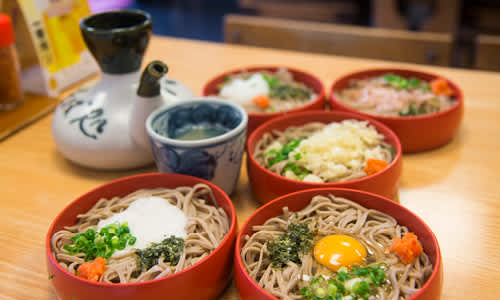
What it is (Ingredients)
Izumo soba is a local specialty of Shimane, known for its unique buckwheat noodles. Made from a blend of buckwheat flour and wheat flour, Izumo soba noodles are characterized by their robust texture and simple flavour. They are typically served either hot or cold with Tsuyu, a soy sauce-based sauce, accompanied by toppings such as green onions, grated daikon radish, and nori. Izumo soba is often served in small round bowls called “Wariko” with generous mounds of soba piled on top one another. When the first layer of soba is eaten with condiments and sauce, the remaining sauce is poured over the next layer of soba, and the process continues.
History/Origin
The history of Izumo soba dates back to the 1600s. It’s said that the samurai who came to rule what is now Shimane originally came from Nagano, famous for Shinshu soba, brought soba artisans with them, and soba spread to the Izumo area. Izumo soba is darker than regular soba, and is known for its rich aroma and high nutritional value, as well its flavour and texture. With local artisans refining techniques to create noodles, Izumo’s artful soba production reflects the area's natural abundance and culinary traditions.
Where to Eat
Izumo soba can be enjoyed at numerous soba shops and restaurants throughout Shimane prefecture, particularly in Izumo City itself.
When to Eat
Izumo soba is a versatile dish enjoyed year-round, however buckwheat harvest season is typically known for being the fall, with certain varieties harvested in the summer. Soba that has been harvested within 1-2 months is called "new soba." Its colour and flavour differ because it is freshly harvested, and it is said to have an excellent aroma.
Explore Shimane’s rich flavours and cultural heritage with Izumo soba, a testament to the prefecture's commitment to culinary excellence and tradition.
Nodoguro

What it is (Ingredients)
Nodoguro, or blackthroat seaperch, is a prized fish known for its rich, fatty flesh and delicate flavour. In Shimane, Nodoguro is typically grilled over charcoal or roasted to perfection, enhancing its natural oils and imparting a smoky, savoury taste.
History/Origin
Nodoguro has been a beloved dish in Japanese cuisine for centuries, revered for its superior taste and nutritional benefits. In Shimane, fishermen have long harvested Nodoguro from the nutrient-rich waters of the Sea of Japan, contributing to its reputation as a local delicacy.
Where to Eat
Nodoguro is prominently featured in restaurants and seafood markets across Shimane prefecture, particularly in Hamada City and Ota City.
When to Eat
Nodoguro is best enjoyed during its peak season of late summer. In Shimane, it is prohibited to fish from June to mid-August to protect resources. Therefore, the main fishing season runs from August to September, when the ban is lifted.
Indulge in the exquisite taste of Shimane's Nodoguro and reveal the secret of this grilled delicacy.

















































